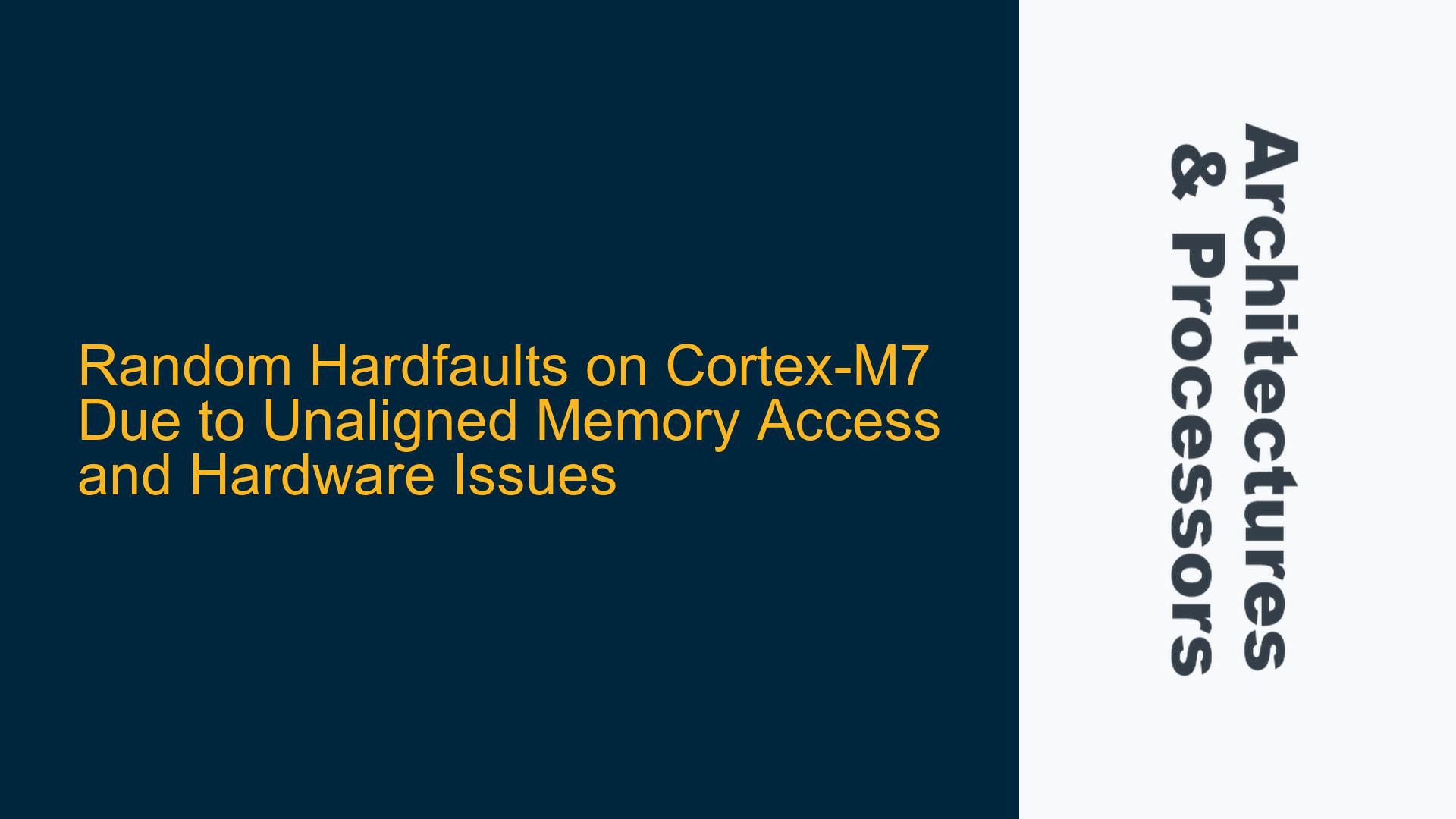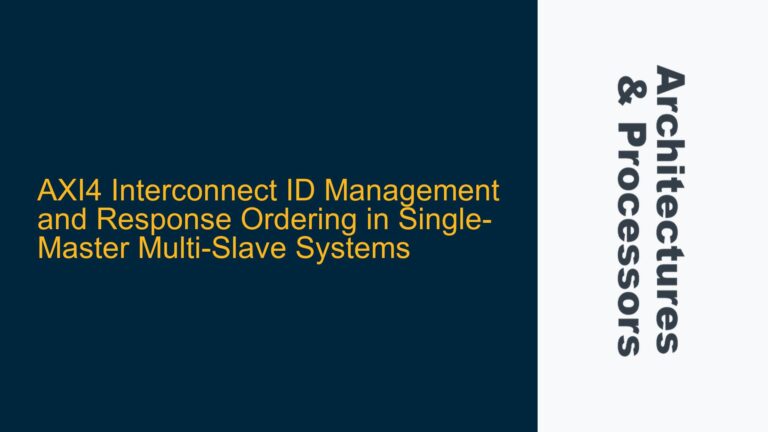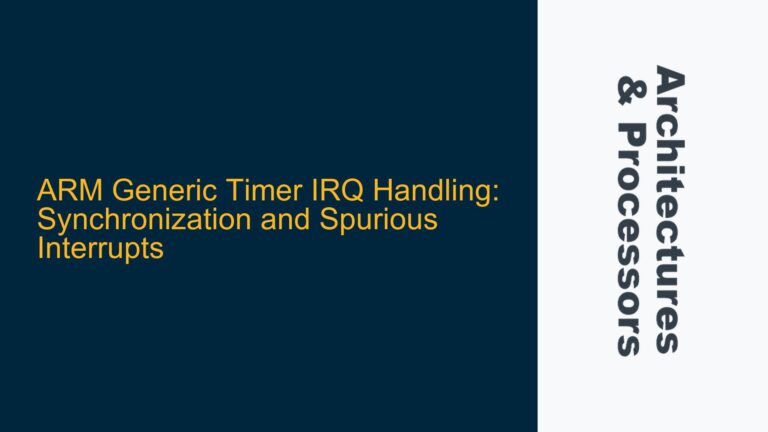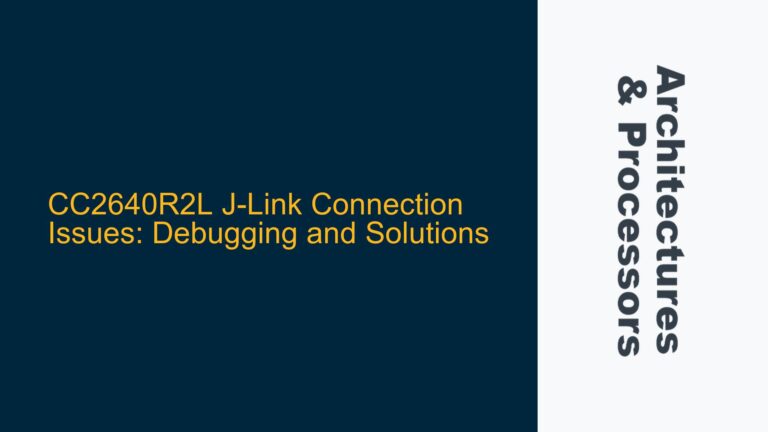Cortex-M7 Hardfaults Triggered by Unaligned Memory Access and Fault Status Register Analysis
The Cortex-M7 microcontroller, specifically the STM32F722 variant, is experiencing random HardFaults that occur at various points in the code execution, including during stack initialization and within the main loop. The HardFaults are characterized by the FORCED bit in the HardFault Status Register (HFSR) being set to 1, indicating that a fault escalation has occurred. The Configurable Fault Status Register (CFSR) shows a value of 0x1000000, which corresponds to the UNALIGNED bit in the Usage Fault Status Register (UFSR) being set to 1. This indicates that an unaligned memory access has occurred. However, the UNALIGNED_TRAP bit is set to 0, meaning that the Cortex-M7 is not configured to trap unaligned accesses explicitly.
The faulting instructions, as observed in the Program Counter (PC) and Link Register (LR), appear to be benign memory access instructions such as ldr, str, ldr.b, and str.b. These instructions are part of the main loop and typically execute without issue, making the occurrence of unaligned memory access faults puzzling. The stack analysis does not indicate any risk of overflow, as the stack depth is consistently shallow, with no more than two levels of stack usage at the time of the fault.
The Cortex-M7’s memory system is designed to handle unaligned accesses in most cases, but certain conditions can lead to faults. The Cortex-M7 Technical Reference Manual (TRM) specifies that unaligned accesses to Device or Strongly-Ordered memory regions will result in a UsageFault. Additionally, unaligned accesses to Normal memory regions may not always be handled gracefully, especially if the memory subsystem is not properly configured or if there are hardware issues.
The presence of the FORCED bit in the HFSR suggests that the UsageFault has been escalated to a HardFault. This escalation can occur if the UsageFault handler is not present or if the UsageFault is not enabled. In this case, the STM32 HAL provides default fault handlers, including a UsageFault handler, which should prevent the escalation. However, the fact that the fault is being escalated indicates that there may be an issue with the fault handling configuration or that the fault is occurring under conditions that bypass the standard fault handling mechanisms.
Missing Capacitors and Power Supply Instability Leading to Memory Corruption
One of the primary causes of random HardFaults in Cortex-M7 microcontrollers is hardware instability, particularly in the power supply circuitry. The Cortex-M7 is a high-performance microcontroller with a complex memory subsystem, and it is sensitive to power supply noise and instability. Missing or improperly sized decoupling capacitors can lead to voltage fluctuations on the power supply rails, which can cause memory corruption, incorrect instruction execution, and ultimately, HardFaults.
In the case of the STM32F722, the user reported that the issue was resolved by adding missing capacitors to the board. This suggests that the power supply instability was causing intermittent memory corruption, leading to unaligned memory accesses and subsequent HardFaults. The Cortex-M7’s memory protection unit (MPU) and fault handling mechanisms are designed to detect and handle such issues, but they cannot compensate for fundamental hardware problems.
Another potential cause of unaligned memory access faults is improper memory region configuration. The Cortex-M7 allows for fine-grained control over memory attributes, including whether unaligned accesses are permitted. If the memory regions are not properly configured, unaligned accesses may be allowed in regions where they should be prohibited, leading to faults. Additionally, the Cortex-M7’s cache system can introduce complexities in memory access patterns, especially when dealing with DMA transfers or other non-CPU memory accesses. If the cache is not properly managed, it can lead to inconsistencies between the CPU’s view of memory and the actual memory state, potentially causing unaligned access faults.
Finally, compiler and toolchain issues can also contribute to unaligned memory access faults. The GCC compiler used in this case may generate code that inadvertently performs unaligned accesses, especially if optimization levels are high or if specific compiler flags are not set correctly. The Cortex-M7’s alignment checking mechanism is designed to catch such issues, but they can still occur under certain conditions.
Implementing Hardware Fixes and Software Workarounds for Stable Operation
To address the random HardFaults caused by unaligned memory access and hardware instability, a combination of hardware fixes and software workarounds is necessary. The first step is to ensure that the hardware design is sound, particularly with regard to the power supply circuitry. This includes verifying that all required decoupling capacitors are present and properly sized, and that the power supply rails are stable under all operating conditions. In the case of the STM32F722, adding the missing capacitors resolved the issue, indicating that power supply instability was the root cause.
In addition to hardware fixes, software workarounds can be implemented to mitigate the risk of unaligned memory access faults. One approach is to enable the UNALIGNED_TRAP bit in the Configuration and Control Register (CCR) of the Cortex-M7. This will cause the processor to trap unaligned accesses explicitly, allowing the fault handler to log the faulting instruction and address, and potentially recover from the fault. However, this approach may impact performance, as unaligned accesses will no longer be handled silently by the memory system.
Another software workaround is to carefully review and adjust the memory region configuration in the MPU. Ensuring that unaligned accesses are prohibited in Device and Strongly-Ordered memory regions can prevent faults from occurring in these regions. Additionally, configuring the cache system to maintain consistency between the CPU and memory can help prevent unaligned access faults caused by cache incoherency. This may involve using data synchronization barriers (DSB) and instruction synchronization barriers (ISB) to ensure that memory accesses are properly ordered and that the cache is flushed when necessary.
Finally, reviewing the compiler and toolchain settings can help identify and eliminate potential sources of unaligned memory accesses. This includes ensuring that the appropriate compiler flags are set to enforce alignment requirements, and that the code is compiled with optimization levels that do not introduce unaligned accesses. In some cases, it may be necessary to manually review the generated assembly code to identify and correct any unaligned access instructions.
By combining hardware fixes with software workarounds, it is possible to achieve stable operation of the Cortex-M7 microcontroller and prevent random HardFaults caused by unaligned memory access and hardware instability. The key is to carefully analyze the fault conditions, identify the root cause, and implement targeted solutions that address both the hardware and software aspects of the issue.






